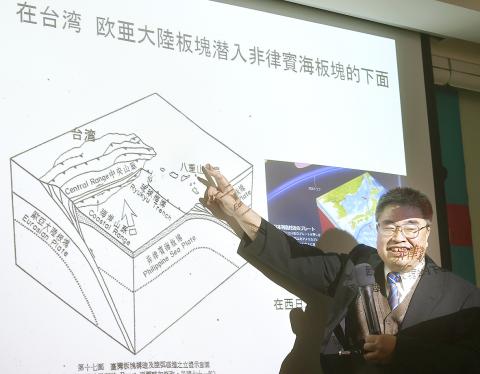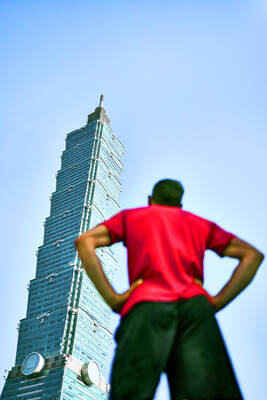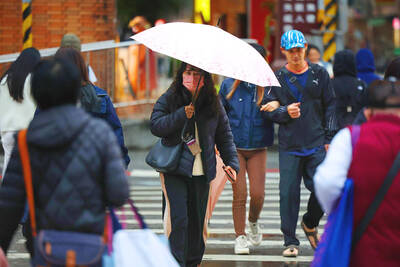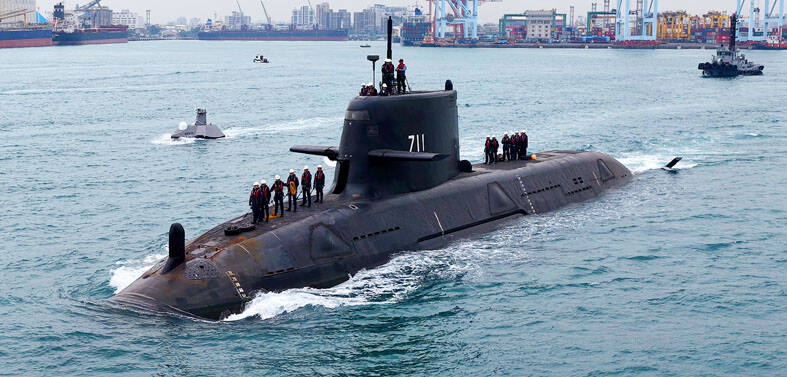Japanese geologist Yoshinobu Tsuji and nuclear industry consultant Satoshi Sato yesterday at a forum in Taipei spoke about potential safety problems at Taiwan’s nuclear power plants, potential pitfalls related to the emergency response mechanism and why extending the service life of nuclear power plants is unsafe.
Tsuji, a leading researcher of geophysics in his country, started his presentation with the question: Why was the Fukushima Dai-ichi nuclear power plant devastated by the tsunami generated by the March 11, 2011, earthquake, while the nearby Onagawa nuclear power plant remained intact?
He said the base of the diesel generator at the Fukushima plant, which was used to power the plant’s cooling system, was only 4m high, while that of the Onagawa plant was 15m. Due to the low-lying design of the Fukushima plant, the seawater easily breached the facility and damaged the generator, which contributed to the subsequent meltdown.

Photo: Fang Pin-chao, Taipei Times
He suggested that the diesel generators at Taiwan’s nuclear power plants be kept at a level of at least 10m to prevent intruding seawater in the event of a tsunami.
Presenting historical data on tsunamis that have hit Japan, Tsuji said that one devastating earthquake-induced tsunami is expected to take place in the waters off the Ryukyu Islands, only about 100km northeast of Yilan County, every 1,000 years or so.
He said the most powerful tsunami in Japanese history occurred in 1771 near the Ryukyu Islands, during which the waves rose 84.5m above sea level, and that if a tsunami of that magnitude were to take place in the area again, it would certainly affect Taiwan.
Using the latitude of the Yaeyama Islands as a baseline, he said that northern Taiwan is vulnerable to tsunamis, and suggested that geologists look into any historical records of major tsunamis that have hit Taiwan.
During his presentation, Sato, a member on a Japanese parliamentary committee established to investigate the Fukushima nuclear disaster, commented on the emergency response mechanism, known as “the ultimate measure,” espoused by the state-run Taiwan Power Co, calling the method “interesting, but impractical.”
He said Taipower’s method comprises of three steps: depressurizing the reactors, injecting water into the reactor core and discharging the air in the reactors.
The first problem is the unavoidable time gap between depressurizing and injecting water — once the safety valve is opened, the water level inside the reactor drops significantly, while the pressure inside can take up to an hour to fall before water can be injected, causing fuel rods to overheat, he said.
The situation would be even more dire during a power failure, which was the case for the Fukushima plant, in which workers on the site could not even open the safety valve due to the damaged power system.
He said that the method proposed by Taipower is very intricate and requires flawless timing, and is therefore very risky, adding that one should not adopt a “speculative” attitude toward nuclear accidents.
Regarding safety standards for nuclear power plants, Sato said that all four nuclear plants in Taiwan failed the international standards set by the European Nuclear Safety Regulators Group, which stipulates that such a facility must be able to withstand an external hazard likely to occur once every 10,000 years, such as a powerful earthquake or tsunami.
The group suggested that Taiwan include the plants’ resilience against tsunami and landslides in its safety evaluations, and improve the facilities’ ability to cope with typhoons.
He said the real danger in extending the service life of a nuclear plant lies not in the age of a facility, but in “hidden design flaws not recognized until a serious accident occurs.”
He said that older types of nuclear power plants, such as the Fukushima plant, are mostly constructed in a way that binds all the switches to activate their safety mechanisms on the same circuit board, which once damaged by intruding seawater becomes dysfunctional and paralyzes the whole safety mechanism of the plant.
Japan and Taiwan Exchange Association spokesperson Chen Hong-mei (陳弘美), who organized the forum, said nuclear energy infrastructure is a hotbed for collusion between the government and academics because people often view nuclear energy as esoteric.
She said that the public deserves to know the basic facts of nuclear power plant operations so that stakeholders promoting nuclear energy cannot use their lack of awareness against them.

US climber Alex Honnold is to attempt to scale Taipei 101 without a rope and harness in a live Netflix special on Jan. 24, the streaming platform announced on Wednesday. Accounting for the time difference, the two-hour broadcast of Honnold’s climb, called Skyscraper Live, is to air on Jan. 23 in the US, Netflix said in a statement. Honnold, 40, was the first person ever to free solo climb the 900m El Capitan rock formation in Yosemite National Park — a feat that was recorded and later made into the 2018 documentary film Free Solo. Netflix previewed Skyscraper Live in October, after videos

NUMBERS IMBALANCE: More than 4 million Taiwanese have visited China this year, while only about half a million Chinese have visited here Beijing has yet to respond to Taiwan’s requests for negotiation over matters related to the recovery of cross-strait tourism, the Tourism Administration said yesterday. Taiwan’s tourism authority issued the statement after Chinese-language daily the China Times reported yesterday that the government’s policy of banning group tours to China does not stop Taiwanese from visiting the country. As of October, more than 4.2 million had traveled to China this year, exceeding last year. Beijing estimated the number of Taiwanese tourists in China could reach 4.5 million this year. By contrast, only 500,000 Chinese tourists are expected in Taiwan, the report said. The report

Temperatures are forecast to drop steadily as a continental cold air mass moves across Taiwan, with some areas also likely to see heavy rainfall, the Central Weather Administration (CWA) said. From today through early tomorrow, a cold air mass would keep temperatures low across central and northern Taiwan, and the eastern half of Taiwan proper, with isolated brief showers forecast along Keelung’s north coast, Taipei and New Taipei City’s mountainous areas and eastern Taiwan, it said. Lows of 11°C to 15°C are forecast in central and northern Taiwan, Yilan County, and the outlying Kinmen and Lienchiang (Matsu) counties, and 14°C to 17°C

STEERING FAILURE: The first boat of its class is experiencing teething issues as it readies for acceptance by the navy, according to a recent story about rudder failure The Hai Kun (海鯤), the nation’s first locally built submarine, allegedly suffered a total failure of stern hydraulic systems during the second round of sea acceptance trials on June 26, and sailors were forced to manually operate the X-rudder to turn the submarine and return to port, news Web site Mirror Daily reported yesterday. The report said that tugboats following the Hai Kun assisted the submarine in avoiding collisions with other ships due to the X-rudder malfunctioning. At the time of the report, the submarine had completed its trials and was scheduled to begin diving and surfacing tests in shallow areas. The X-rudder,